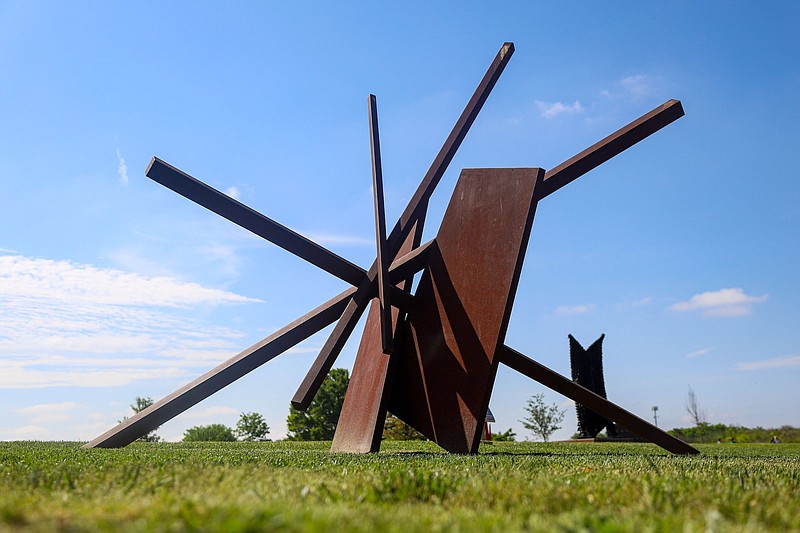In 1976, the city of Chattanooga budgeted for the demolition of the Walnut Street Bridge. The bridge had been condemned by the state as unsafe for vehicular traffic. A group of volunteers mobilized to save the bridge by raising funds which, combined with the original cost of demolition, permitted the bridge to be saved for foot traffic. As a result, Chattanooga was named in the "Guinness Book of Records" as having the longest bridge in the world devoted exclusively to pedestrian use. The salutatory economic benefits of the Walnut Street Bridge restoration are a matter of record.
Today Chattanooga has another chance to enter the Guinness book. By combining the 13 acres used by the Chattanooga Football Club Foundation with the 33 acres now occupied by Sculpture Fields at Montage Park, the resulting 46-acre park would be the largest contemporary urban sculpture park in the country.
There are larger sculpture parks. Storm King, a two-hour drive outside New York City, clocks in at 500 acres. It is in the middle of nowhere. Sculpture Fields at Montague Park would be the largest park inside a city's limits focused on contemporary sculpture.
The potential for uniting Montague Park is made possible by the initiatives of Mayor Tim Kelly to set aside an additional 500 acres for public parks in the city. Relocating the soccer fields would take up less than 3% of this amount of land. Doing so would accomplish a number of salutary effects.
First, it would permit Sculpture Fields to create an amphitheater similar to Chastain Park in Atlanta. The additional land also would provide parking as well as an area for an urban farmers market. An outdoor area for weddings and other events would be possible as well as space for the displaying of additional sculptures of international renown.
Second, the relocation would address the concerns of both the safety of the sculptures and the youths who would gather for the soccer matches. If someone were to climb on a sculpture piece and damage it, who would pay? If the climber were to fall, who would be liable? As a city park, the deep pockets would be the city of Chattanooga. Having a soccer field in such close proximity would implicitly encourage such behavior in a way a more remote location would not.
Finally, separating the soccer fields from Sculpture Fields will ensure that the integrity of the amphitheater is preserved. No one wants to attend a live performance punctuated by the roar of a soccer game next door. As Sculpture Fields at Montague Park receives minimal support from the city and charges no admission, a source of income like the amphitheater and private events is crucial to the welfare and upkeep of the park.
A unified Montague Park would fulfill the wishes of Mildred Montague, who gave the land to the city in 1911. Her vision was set by an associate of Frederick Law Olmstead, the designer of Central Park in New York. To be diplomatic, the city has not always been a good steward of Mildred Montague's legacy bequest and wishes.
With no admission charged, park usage is a best-guess estimate. Last year more than 80,000 people used the park. The Sculpture in the Sky kite-flying event last spring attracted more than 8,000. The Sculpture Burn in the Fall has drawn more than 10,000 attendees. Many people use the park for relaxation and meditation, which is exactly what Mildred Montague wanted them to do. Sculpture Fields has played a pivotal role in the economic revitalization of the surrounding area in a manner similar to the Walnut Street Bridge.
Sculpture Fields at Montague Park has a bright future. Its volunteer board and staff, also mostly volunteers, has worked tirelessly to improve the park from the condition it was in when leased to John and Pamela Henry in 2012. Unifying the park will help to both promote its original mission and add an entertainment venue in the downtown area. And don't forget the bragging rights.
Warren M. Barnett, founder and president of Barnett and Co., serves on the board of the Sculpture Fields at Montague Park.
